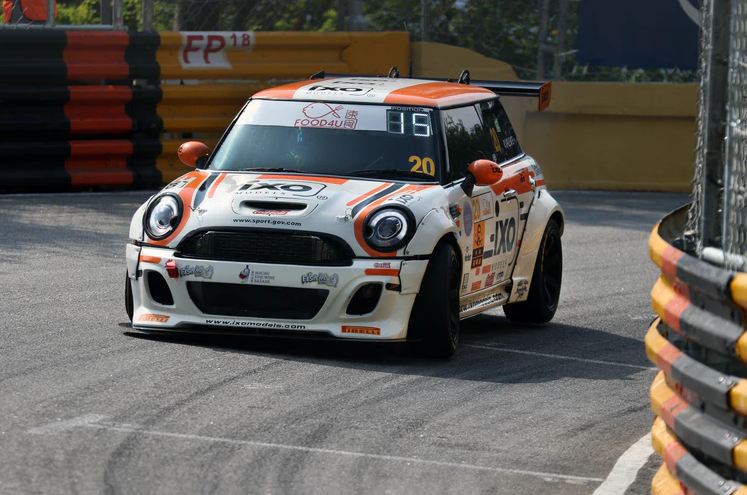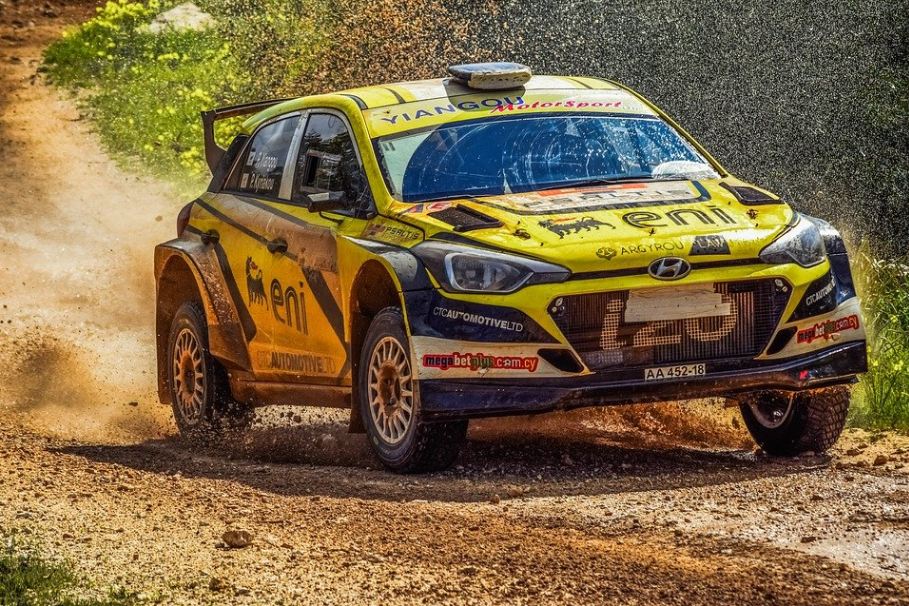The Ulster Rally is a race that is held in Ulster, which is a region located in the northern part of Ireland and has been running since 1976. This race is usually the last round in the bigger rally called the British Rally Championship (BRC), a rallying series that has been around since 1958 and is the biggest racing event in the United Kingdom.
The rally held in Ulster is particularly known to be one of the most difficult races in the UK, as the road’s surface is made of tarmac, a material that primarily consists of tar and crushed rocks. In addition, the Ulster Rally is held in months where the weather in the UK is unpredictable, so drivers would have to adjust to the road conditions on the fly, as it could sometimes be wet or slippery. Because of the difficult conditions associated with the Ulster Rally, many people would often praise racers who win a podium finish in the said rally more than racers that won in other rallies. To know more about the winners of the rally over the years, here is the history of the Ulster Rally.
The 1970s
The first-place winner of the very first Ulster Rally in 1976 was Cahal Curley, who drove a Porsche model that was also used by Dessie McCartney (2nd in the race) and Brian Nelson (finished 3rd). However, in the second Ulster rally in 1977, there was only one Porsche driver that got a podium finish, and that driver was Derek Boyd, who drove a Porsche Carrera. The second and third placers for the 1977 race were Russell Brookes (drove a Ford Escort) and PenntiAirikkala (drove a Vauxhall Chevette HS), respectively.
In the 1978 Ulster Rally, professional racer John Taylor won first place by driving a Ford Escort. The second-place winner, Ernest Kidney, also used an Escort while the third placer, Brian Nelson, drove a Porsche. In 1979, the third-place winner of the 1977 race, PenntiAirikkala, won first place by using his trusty Vauxhall Chevette HS.
The 1980s
The first Ulster Rally in the 1980s was won by Dessie McCartney, who used the Vauxhall Chevette HSR in the roads of his home town of Larne. Derek Boyd won second place in the same race, while Robin Lyons finished third. In the 1981 race, Jimmy McRae won first place using an Opel Ascona 400, and Bertie Fisher won second using a Ford Escort. By 1982, Bertie Fisher finally won first place while driving the Ford Escort, with Per Eklund winning second place on a Toyota Celica and Ian Cathcart finishing third on an Opel Ascona.
In the 1983 Ulster Rally, Swedish racer StigBlomqvist won first place using the Audi Quattro, while Bertie Fisher finished second with his new Opel Manta 400. The following year, another Audi Quattro driver, Walter Rohl, finished first place in the 1984 Ulster Rally. In 1985, Jimmy McRae won first place again after three years, but this time, he drove an Opel Manta 400.
By 1986, Jimmy McRae used a new car called the Rothmans Metro 6R4 and won first place with it in the Ulster Rally. The second placer for the 1986 race was Mark Lovell in the Ford RS200, and the third placer was Michael Sundstrom in the Peugeot 205T16. In the next Ulster Rally the following year, the former second placer Mark Lovell won first place using a Ford Sierra. In 1988, Jimmy McRae won first place for the third time using a Ford Sierra RS Cosworth. For the 1989 Ulster Rally, Gwyndaf Evans, also known as the Welsh Wizard, won first place while driving the Ford Sierra Cosworth, and Russell Brookes won second with a Sierra as well.
The 1990s
In the 1990 Ulster Rally, David Llewellyn won first place ahead of Bertie Fisher with a four-minute margin using a Toyota Celica GT Four. In the next year’s race, Bertie Fisher won first place for the second time while driving a Ford Escort MkII.
In 1992, even though the Circuit of Ireland dropped out of the British Rally Championship, the Ulster Rally remained to be a part of the BRC. In that year, Colin McRae won first place by driving the Subaru Legacy RS with an amazing 11-minute margin against the second placer, David Greer. The following year, Malcolm Wilson became the first-time first place the Michelin Pilot Ford Escort Cosworth, which would eventually become an iconic car in the BRC, as Wilson would win first place again in the next Ulster Rally in 1994 using the same vehicle.
In the 1995 Ulster Rally, Bertie Fisher won first place using a Subaru Impreza, which overwhelmed second place winner Stephen Finlay because of its speed. In 1996, Bertie Fisher used the same Impreza to win first place in the Ulster Rally. By 1997, the Ulster Rally saw several newcomers becoming better than the veterans, as it was Mark Higgins that won first place using an F2 Nissan Sunny GTi. In 1998, the Welsh Wizard Gwyndaf Evans finished first place in the rally while driving a Seat Ibiza Kit Car. For the last Ulster Rally in the 90s, the first place was taken by Neil Wearden, who drove a Vauxhall Astra against second placer Gwyndaf Evans.
The 2000s
Ian Greer won first place in the first Ulster Rally in the 2000s, which brought about changes in how spectators can watch the race to make it more interesting. The Northern Ireland Motor Club, responsible for holding the Ulster Rally, added spectator areas for a better live viewing experience as well as commentators for interesting analyses on TV. Unfortunately, their efforts to get more people interested in the Ulster Rally was halted in 2001, when the race was canceled due to an outbreak of foot and mouth disease in the United Kingdom.
The Ulster Rally would return in 2002, with Andrew Nesbitt winning first place using a Subaru Impreza. In the next race in 2003, Finnish racer TapioLaukkanen won first place using another Subaru Impreza, and he became the second Finn that won the Ulster Rally, with the first one being PenntiAirikalla. In 2004, Mark Higgins won the Ulster Rally for the second time while driving the Stobart Focus WRC and finishing with a 2.5-minute margin between him and second placer Eugene Donnelly, who drove a Toyota Corolla.
In 2005, the second placer of the previous rally, Eugene Donnelly, won first place for the first time in the Ulster Rally using the same Toyota Corolla. Donnelly would win first place again in the Ulster Rally 2006 with the same car. In the 2007 rally, Kris Meeke was leading the race from start to finish, which allowed him to win first place with his Impreza against Eugene Donnelly, who finished second. For the 2008 race, it was Eamonn Boland who won first place while driving a Subaru Impreza, which would become the winningest vehicle in the 2000s and 2010s. Eugene Donnelly drove a new car, namely the Skoda Fabia, for the 2009 rally, and it helped him win first place.
The 2010s
Another Subaru Impreza won first place in the first Ulster Rally in the 2010s, but this time it is driven by Derek McGarrity. The following year, a Subaru Impreza won again, and it was driven by Tim McNulty, with Derek McGarrity finishing second. In 2012, Darren Gass won first place using another Subaru Impreza, and the second-place winner, Garry Jennings, was also using the same model. For the 2013 Ulster Rally, Garry Jennings finally won first place with his Impreza WRC.
The Ulster Rally in 2014 was a tragic event, as an accident on the track led to the death of driver Timothy Cathcart. Because of the accident, the organizer had to cancel the race, although they declare Garry Jennings the winner of the race based on his position before the race ended abruptly.
In 2015, Garry Jennings was looking to get a 3-peat of first place wins in the Ulster Rally, but unfortunately, his Impreza burst into flames during the final stage of the race, leaving the driver behind him, Donagh Kelly, to win first place. In 2016, Elfyn Evans, son of the Welsh Wizard Gwyndaf Evans, won first place in the Ford Fiesta R5.
For the 2017 rally, Keith Cronin finished first in the Ford Fiesta, while Fredrik Ahlin of Sweden won second in the Skoda Fabia R5. In 2018, another Ford Fiesta R5 won the race, and this vehicle was driven by Matt Edwards. The 2019 Ulster Rally was won by Craig Breen using the Ford Fiesta R5. The 2020 Ulster Rally was canceled due to COVID-19, but the organizers of the event assured that they would bring back the exhilarating race in 2021.


